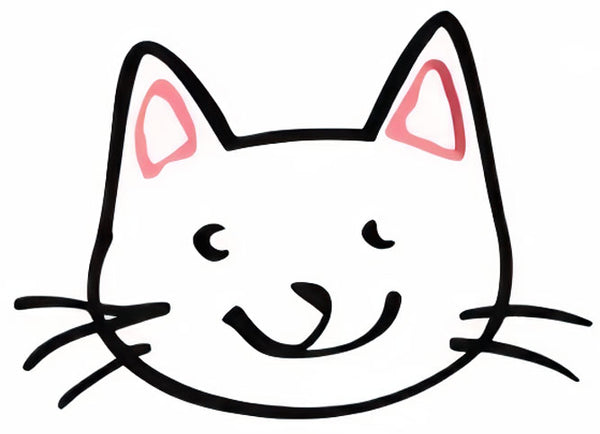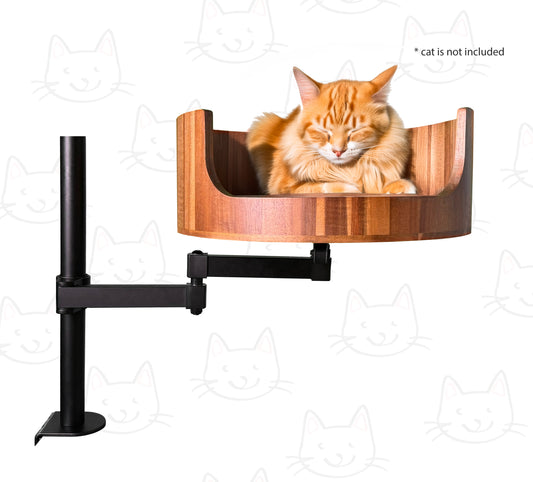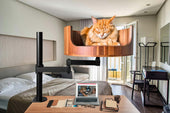
What Does It Mean When a Cat Wiggles Its Tail?
Share
Have you ever noticed your cat wiggling its tail and wondered what it could mean? Cats are known for their unique body language, and their tails play a significant role in communicating their feelings. From excitement to annoyance, a cat's tail movements can give us insight into their mood and intentions. In this article, we will explore the different reasons why a cat may wiggle its tail and what it could indicate about their emotions.
Understanding feline behavior can help us better communicate with our beloved pets and ensure a harmonious relationship. By decoding the subtle signals that our cats display through their tail movements, we can anticipate their needs and provide the care and attention they deserve. Whether your cat's tail is twitching playfully during a hunting game or swishing angrily during a vet visit, being attuned to their body language can help us respond appropriately and strengthen the bond we share with our feline companions. So, let's delve into the world of cat tail wiggles and unravel the mysteries behind this fascinating form of communication.
1. A cat wiggling its tail can indicate excitement, fear, or irritation.
2. Understanding a cat's body language is crucial for interpreting its emotions and intentions.
3. Rapid tail movements may signal aggression, while slow wags can show curiosity or playfulness.
4. Pay attention to other cues like vocalization and body posture to accurately assess a cat's mood.
5. Tail wiggling is just one aspect of feline communication, so consider the context of the situation when interpreting this behavior.
Understanding Cat Communication
Cats communicate through various body signals, including their tails. When a cat wiggles its tail, it can indicate different emotions or messages depending on the context. Tail movements are a crucial part of feline communication, and understanding them can help pet owners better interpret their cats' feelings and reactions.
Signs of Agitation or Aggression
In many cases, a cat wiggling its tail could be a sign of agitation or even aggression. When a cat's tail is flicking back and forth rapidly, it may be a warning that the cat is feeling upset, threatened, or ready to defend itself. This behavior is especially common during interactions with other animals or when a cat feels cornered or uncomfortable in its environment.
Excitement or Playfulness
On the other hand, a cat wiggling its tail could also indicate excitement or playfulness. Cats often exhibit this behavior when they are engaged in interactive play with their owners or other pets. The tail movements may be more subtle and gentle compared to those signaling aggression, and the cat's overall body language will likely appear more relaxed and happy in these situations.
Medical Concerns
In some cases, a cat wiggling its tail excessively or in an abnormal way could be a sign of underlying medical issues. Conditions such as nerve damage, pain, or discomfort in the tail area could cause a cat to exhibit unusual tail movements. It's essential for pet owners to observe their cat's behavior closely and consult a veterinarian if they notice any concerning changes in their cat's tail wagging patterns.
## FAQ
### What does it mean when a cat wiggles its tail?
When a cat wiggles its tail, it can be a sign of excitement or agitation. Cats use their tails to communicate their emotions, so a wiggling tail could indicate that the cat is feeling playful or a bit frustrated.
### Is it normal for a cat to wag its tail?
Yes, it is normal for a cat to wag its tail. Cats use their tails as a form of communication, so tail wagging can be a way for them to express how they are feeling. It's important to pay attention to the rest of the cat's body language to determine the reason behind the tail wagging.
### Should I be concerned if my cat wiggles its tail?
If your cat is wiggling its tail in a playful manner, there is usually no cause for concern. However, if the tail wiggling is accompanied by other signs of aggression or distress, it may be best to give the cat some space and observe their behavior.
### How can I tell the difference between a playful tail wiggle and a stressed tail wiggle?
A playful tail wiggle is usually accompanied by relaxed body language, such as a loose stance and ears pointed forward. On the other hand, a stressed tail wiggle may be paired with flattened ears, dilated pupils, or hissing. It's important to consider the cat's overall demeanor when interpreting their tail wiggles.
In conclusion, if you are looking to provide your cat with a comfortable and secure space to relax and observe their surroundings, the Desk Cat Bed is a valuable choice. Not only does it offer a cozy spot for your furry friend to rest, but it also provides a sense of security and privacy that can help reduce stress and anxiety, potentially leading to less tail wiggling behavior. Additionally, the Desk Cat Bed is easy to clean and maintain, making it a practical and convenient option for both you and your beloved pet. Invest in the Desk Cat Bed today and give your cat the ultimate lounging experience.



















































